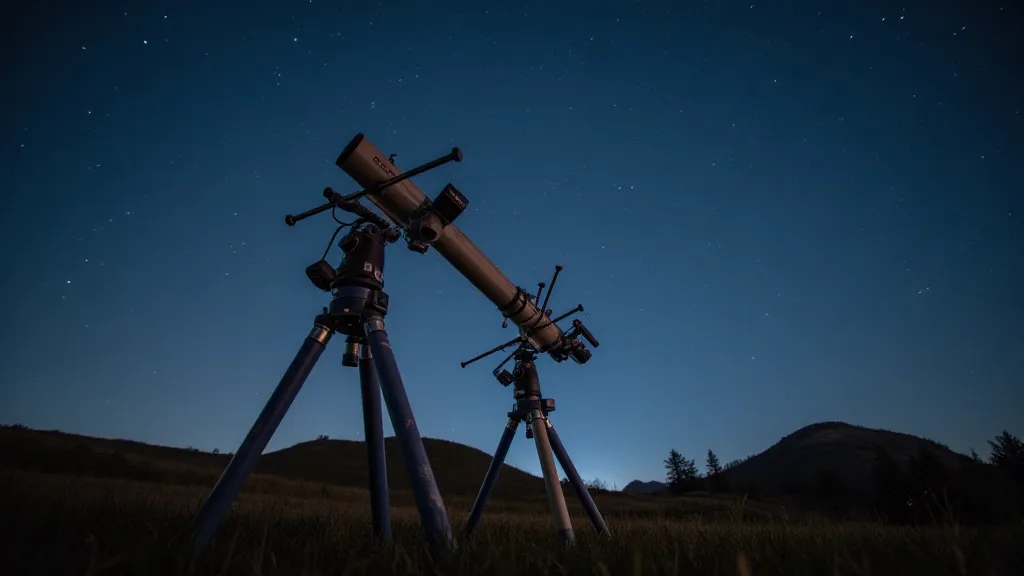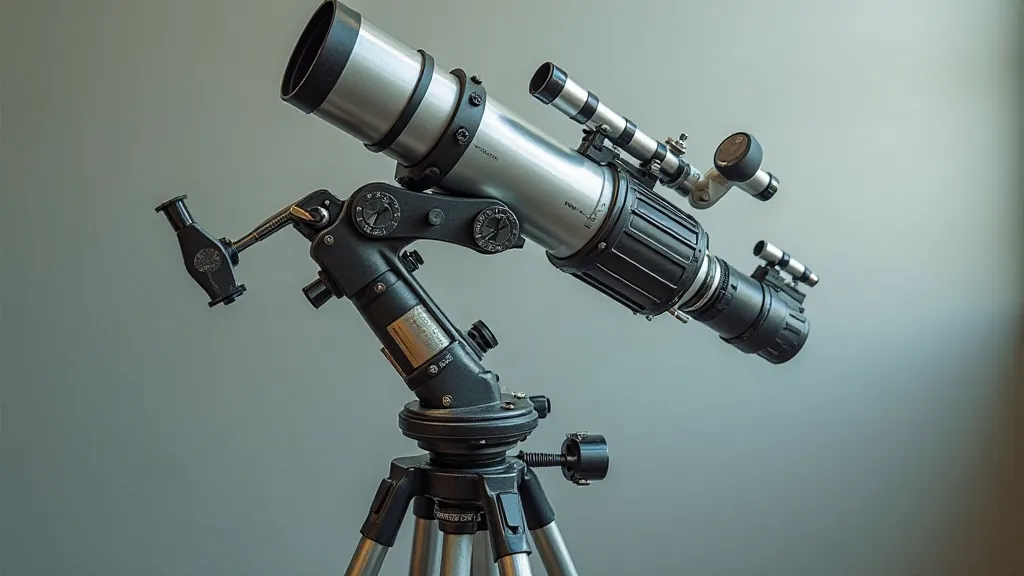Choosing the Right Telescope Mount for Astrophotography
Capturing stunning astrophotographs isn't just about a powerful telescope or a sensitive camera. A crucial, and often overlooked, piece of the puzzle is the telescope mount. The mount's job is to precisely track the night sky as the Earth rotates, allowing you to gather enough light to create a detailed image. Choosing the right mount is critical for success, and there are several types to consider, each with its own advantages and disadvantages. This guide will walk you through the main options to help you find the best fit for your astrophotography journey.
Understanding Mount Types
There are two primary categories of telescope mounts: Alt-Azimuth (Alt-Az) and Equatorial.
Alt-Azimuth (Alt-Az) Mounts
Alt-Az mounts are the simplest type. They move in two axes: altitude (up and down) and azimuth (left and right). Think of them like a terrestrial camera tripod; they rotate horizontally and tilt vertically.

Pros: Relatively inexpensive, easier to set up and transport, often have a wider field of view.
Cons: They suffer from field rotation – as the telescope tracks, stars appear to rotate around a central point, which degrades image quality for long exposures. This makes them less suitable for deep-sky astrophotography without advanced computerized tracking corrections (GoTo capabilities with field rotation correction).
Equatorial Mounts
Equatorial mounts are specifically designed to counteract the Earth's rotation. They have one axis (the polar axis) aligned with the Earth's rotational axis. This single alignment allows the telescope to track the stars with a constant motion, significantly simplifying the process of long-exposure astrophotography. Achieving optimal results, of course, requires a careful approach to understanding astrophotography exposure, especially when dealing with faint deep-sky objects.

Pros: Eliminates field rotation, essential for long-exposure deep-sky astrophotography, simpler tracking once polar aligned.
Cons: More complex to set up, requires careful polar alignment (aligning the mount’s polar axis to match the Earth’s rotational axis), generally more expensive than Alt-Az mounts.
Choosing the Right Mount: Factors to Consider
Here's a breakdown of factors that influence your mount selection:
- Telescope Weight & Aperture: Heavier telescopes with larger apertures require more robust, higher payload capacity mounts. A general rule of thumb is that a mount should have a payload capacity at least twice that of your telescope and camera combined.
- Camera & Accessories: Don’t forget the weight of your camera, any filters you use, and the guide scope (if using one).
- Budget: Mounts range significantly in price, from a few hundred dollars to several thousand.
- Experience Level: Beginners might find an Alt-Az mount easier to manage, while those looking to delve into deep-sky astrophotography will likely need an equatorial mount.
- Portability: Consider the size and weight of the mount if you plan to travel with your equipment.
- GoTo Functionality: Many mounts have "GoTo" capabilities, allowing them to automatically locate and track celestial objects. This can be a significant advantage for beginners or those with a large number of targets to observe. Proper alignment and careful consideration of factors that influence image quality are important, and you might want to explore techniques for stacking astrophotography images to improve the signal-to-noise ratio and reveal more detail.
Types of Equatorial Mounts
Within the equatorial mount category, there are further distinctions:
- Manually Driven Equatorial Mounts: Require manual adjustments for tracking. Suitable for shorter exposures and those who enjoy the hands-on experience.
- Computerized (GoTo) Equatorial Mounts: Automated tracking and object location. Ideal for beginners and for observing a wide variety of objects.
- Motorized Equatorial Mounts: Allow for precise manual control of tracking speed, often used with autoguiding.
Autoguiding: Taking Tracking to the Next Level
Even the best mounts will experience slight tracking errors over time. Autoguiding uses a separate guide scope and camera to monitor the star’s position and automatically make corrections to the mount’s tracking. It's almost essential for serious deep-sky astrophotography. Achieving sharp, detailed images often requires a deep understanding of how different factors interact, including guiding and image acquisition. Examining the patterns of light, such as fractured light and diffraction spikes, can be a valuable diagnostic tool for assessing image quality and guiding performance.

Beyond the Basics: Advanced Considerations
Choosing a mount isn’t just about capacity and functionality; it’s about understanding the entire system. Let's delve into some more advanced aspects.
Polar Alignment: The Cornerstone of Equatorial Tracking
For equatorial mounts, accurate polar alignment is *everything*. A misalignment of even a few degrees can lead to significant tracking errors over time, rendering your images blurry. While many modern mounts offer assisted polar alignment features, mastering the fundamentals of manual alignment remains a valuable skill. This involves careful use of polar alignment scopes, plumb bobs, and understanding the relationship between your mount’s axes and the celestial pole.
The Impact of Mount Stability
A stable platform is crucial for sharp astrophotographs. Even the most sophisticated tracking system cannot compensate for vibrations and instability. Consider the ground conditions where you plan to observe – is it solid and level? Can you use concrete pads or pier extensions to improve stability? Heavier mounts, while more capable, also tend to be more stable, minimizing the impact of subtle vibrations.
Understanding Mount Wobble
Mount wobble refers to unwanted periodic motions in the mount's rotation. These can be caused by a variety of factors, including gear backlash, bearing imperfections, and even subtle imbalances in the mount’s structure. While some wobble is unavoidable, it's important to be aware of it and to take steps to minimize its impact. Careful balancing of the telescope and camera assembly can often reduce wobble.
Expanding Your Observational Targets
The type of objects you intend to photograph will heavily influence your mount selection. For example, imaging planets like Jupiter and Saturn demands exceptionally stable tracking to capture fine details. Similarly, deep-sky objects like nebulae and galaxies require long exposures, placing a greater emphasis on tracking accuracy. For planetary imaging, you'll want to consider techniques for achieving even higher frame rates and minimizing atmospheric turbulence.
Conclusion
Choosing the right telescope mount is a critical investment in your astrophotography journey. Carefully consider your budget, experience level, and the type of objects you plan to photograph. Research different models, read reviews, and don't be afraid to ask for advice from experienced astrophotographers. With the right mount, you'll be well on your way to capturing stunning images of the night sky.





